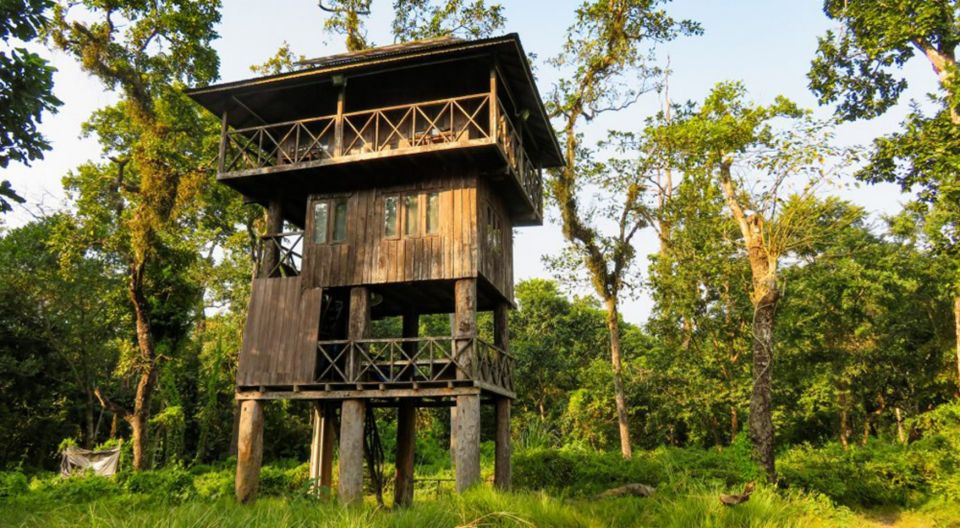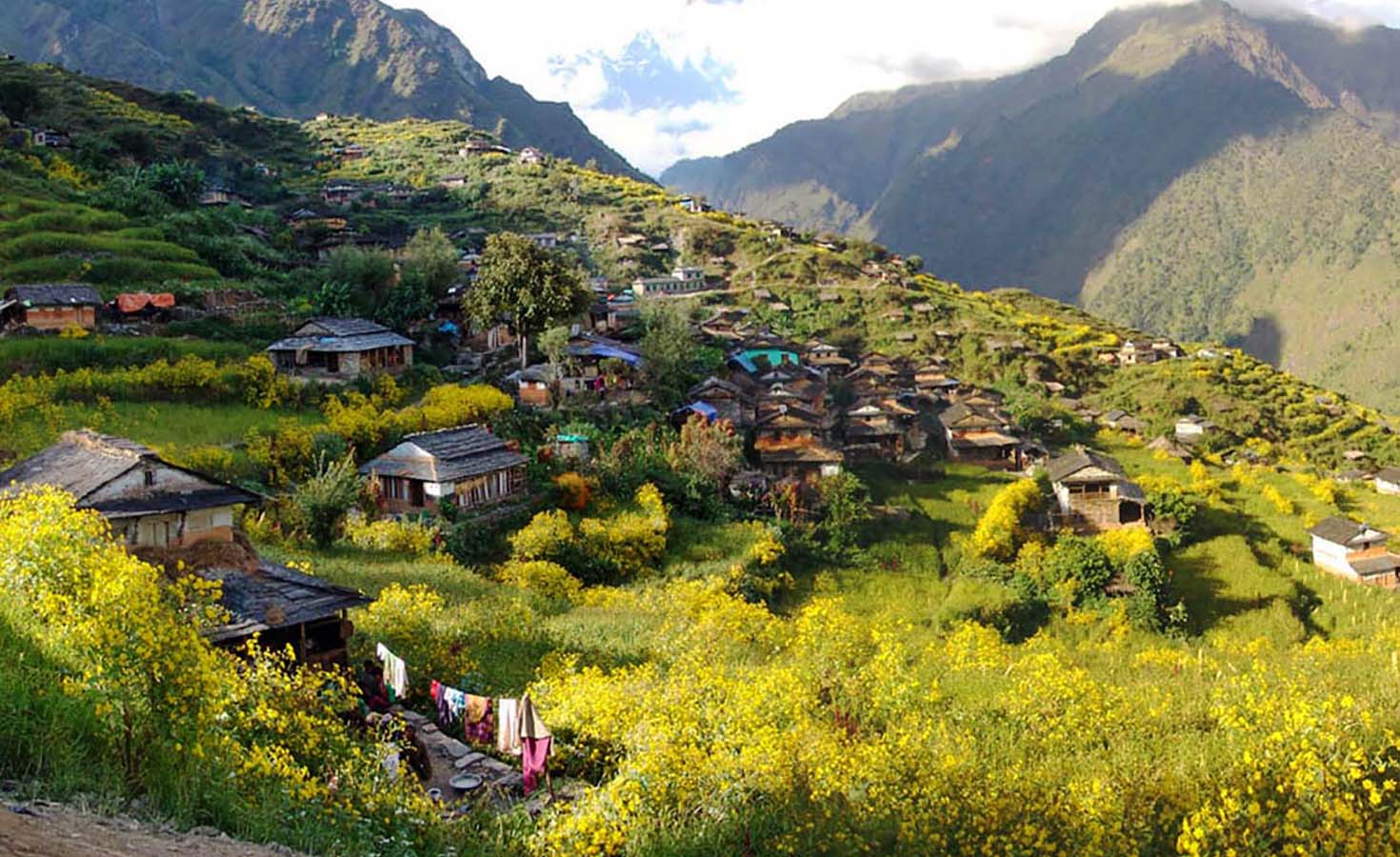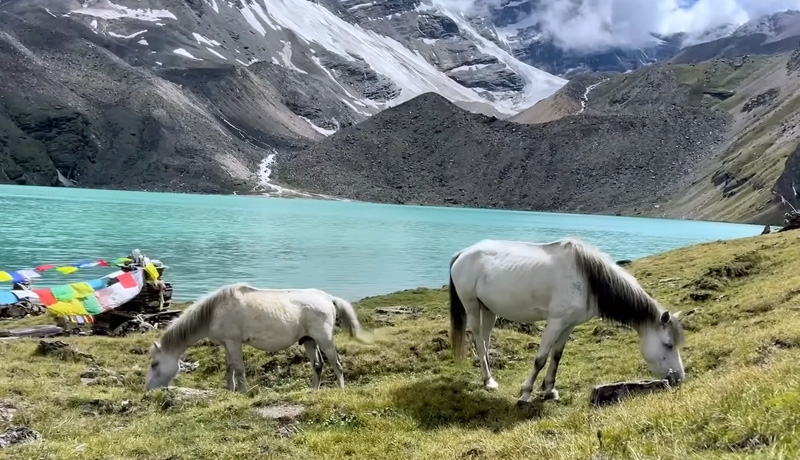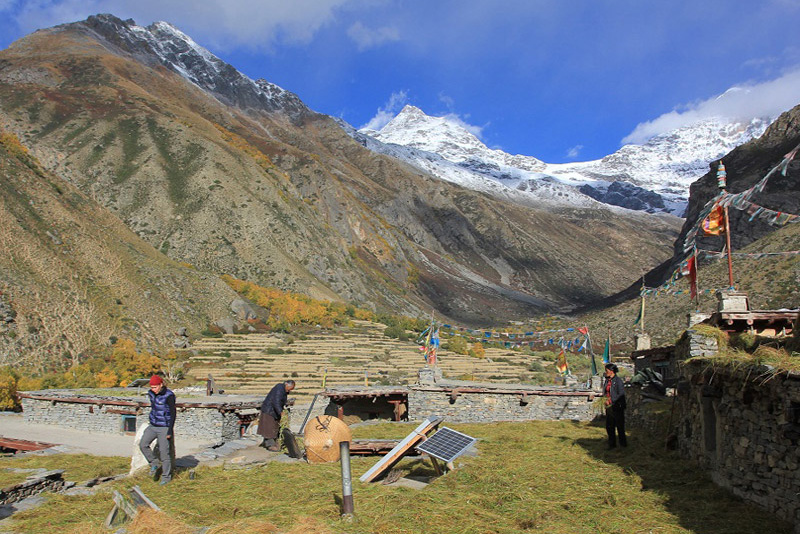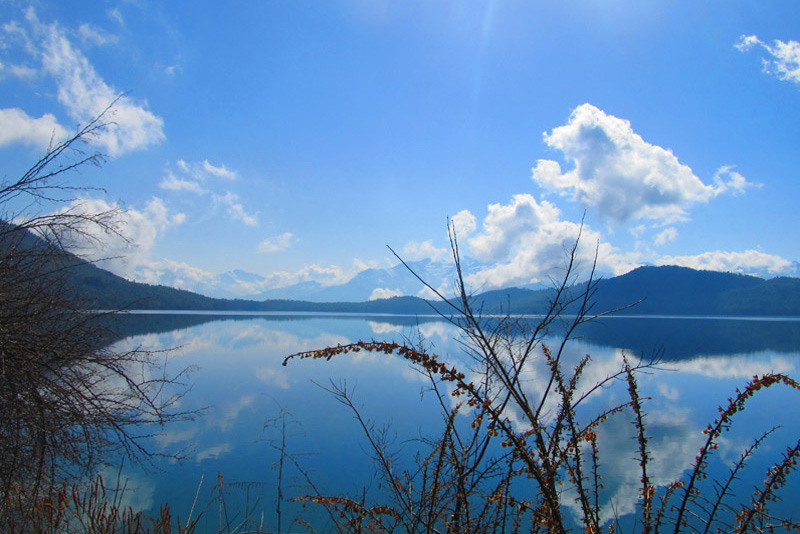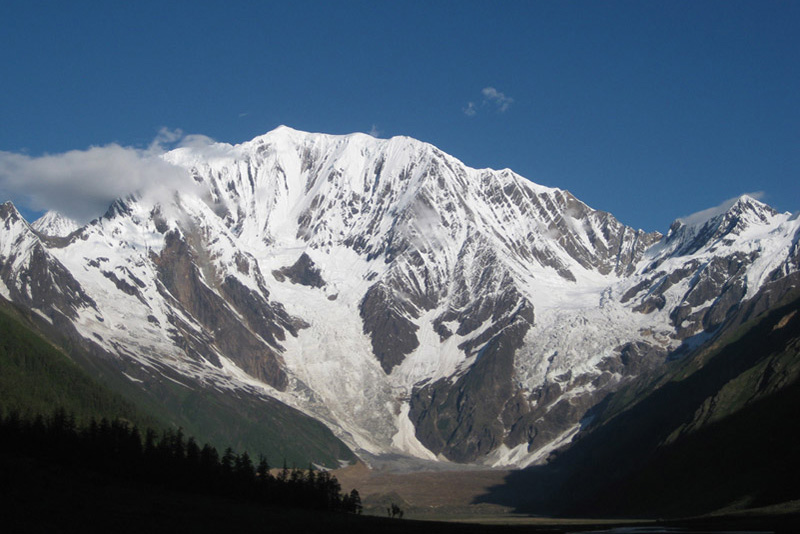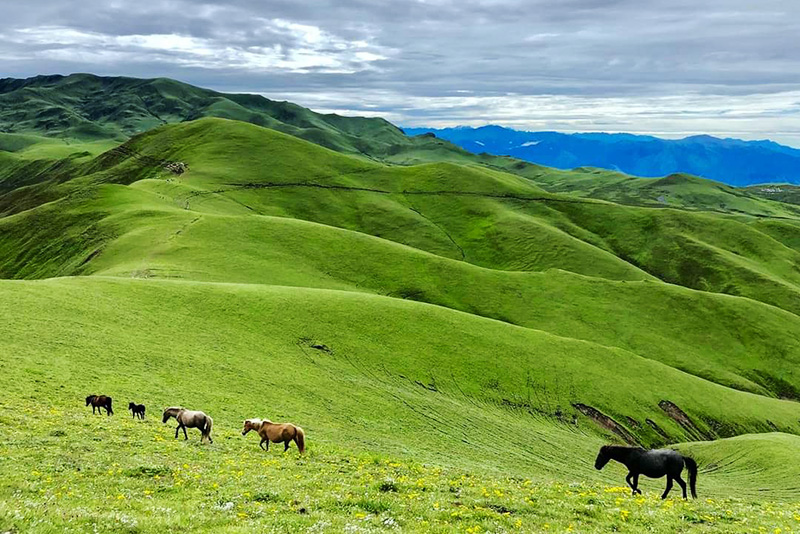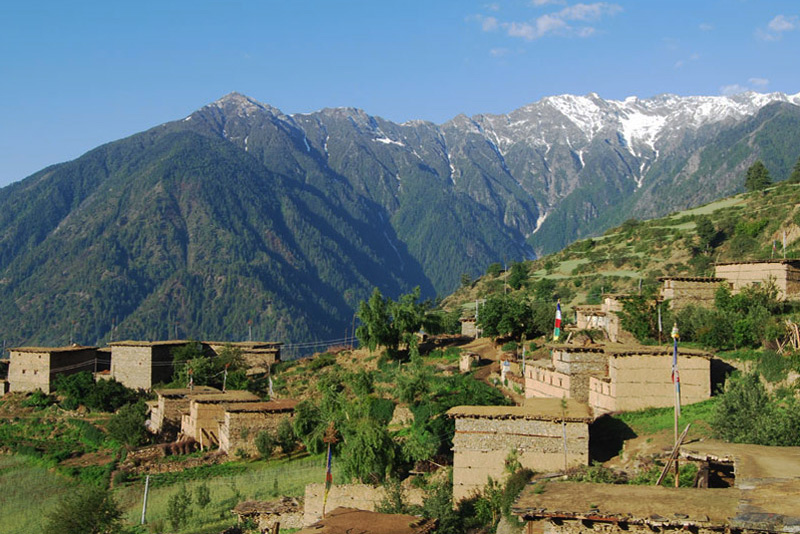Dhorpatan Trek
Dhorpatan trek is a lovely trek over diverse terrain with views of the majestic Himalayas, is ideal for individuals who are interested in hunting wildlife. We also provide hunting tour packages that require an additional four or five days. Hunting is permitted with a valid license and during specific times of the year. This location is trekkable by anyone in decent physical shape who can walk for several hours every day. This does not require competence as an adventure climber. It offers magnificent views of the Dhaulagiri and Annapurna mountain ranges. The Department of National Parks and Wildlife Conservation in Kathmandu issues game licenses. Dhorpatan is also a popular location for trekkers and wildlife enthusiasts, as protection has allowed the animal population to flourish.
Dhorpatan walk provides the opportunity to explore areas that are almost pristine and still have a distinct culture unaffected by western influences. It has alpine, subalpine, and high temperate vegetation. Fir, pine, birch, rhododendron, hemlock, oak, juniper, and spruce are common plant species. The region’s vegetation is comprised of a well-developed mixed-hardwood forest at lower elevation and numerous plant species adapted to a drier climate to the north. Other game species include the Ghoral, Himalayan Tahr, Black Bear Pheasant, and the Partridge. As in many other Nepalese protected areas, the reserve is home to various villages populated by hill tribes and people of Tibetan heritage who supplement their farming with commerce and animal husbandry. The reserve is home to various endangered species of pheasants and partridge, most notably the Chirr Pheasant and the Danphe, the national bird of Nepal, which has nine different colors. The Dhorpatan Hunting Reserve is also a desirable destination for trekkers and wildlife enthusiasts who like to visit this remote region. Dhorpatan is a palace rich in nature and culture. The Dhorpatan Hunting Reserve has designated a specific area where only particular wild species are permitted to be hunted for the purpose of managing the area’s overall population. It is a truth that hunting operations in the reserve are restricted.
Dhorpatan Trek Highlights
Dhorpatan Trek is a lesser-known trekking route in western Nepal that offers a unique experience for trekkers. Here are some highlights of the Dhorpatan Trek.
Off-the-Beaten-Path: Dhorpatan Trek is relatively less crowded compared to popular trekking routes like the Annapurna and Everest regions, making it perfect for those seeking a quieter and more authentic trekking experience.
Dhorpatan Hunting Reserve: One of the main attractions of this trek is the Dhorpatan Hunting Reserve, which is the only hunting reserve in Nepal. However, hunting is regulated and controlled, and the reserve is more focused on conservation and wildlife protection. The reserve is home to various wildlife species, including the elusive blue sheep and the red panda.
Scenic Landscapes: The trek takes you through diverse landscapes, including lush forests, alpine meadows, and high mountain passes. You’ll have the opportunity to witness stunning views of the Dhaulagiri and Annapurna ranges.
Cultural Exploration: The trek offers insights into the culture and lifestyle of the people living in the remote villages of western Nepal. You’ll have the chance to interact with local communities, experience their hospitality, and learn about their traditions and customs.
Unique Flora and Fauna: The region is rich in biodiversity, with various species of flora and fauna found along the trail. You might encounter rare and endemic species of plants and animals, including different species of rhododendrons, pheasants, and other birds.
Challenging Terrain: The Dhorpatan Trek is considered a moderate to challenging trek, as it involves traversing through varying terrains and altitudes. Trekkers will need to be prepared for steep ascents, descents, and possibly crossing high mountain passes.
Hot Springs: Along the route, there are natural hot springs where trekkers can relax and rejuvenate their tired muscles. This can be a rewarding experience after days of trekking.
Photography Opportunities: The trek provides numerous photo opportunities, from the breathtaking mountain views to the unique cultural experiences. The landscapes and wildlife of the region offer ample chances for capturing stunning images.
Seasonal Variations: The best time for the Dhorpatan Trek is during the spring (March to May) and autumn (September to November) seasons. During these times, the weather is relatively stable, and the visibility is better, allowing for clearer mountain views.
Remote and Tranquil: The remoteness of the area adds to the tranquility of the trek. You’ll often find yourself away from the hustle and bustle of more popular trekking routes, making it an excellent choice for those seeking solitude and a deeper connection with nature.
The Best time for Dhorpatan Trek
The best time for the Dhorpatan Trek is during the spring (March to May) and autumn (September to November) seasons. These months offer the most favorable weather conditions and optimal trekking experiences. Here’s why.
Spring (March to May):
Moderate Temperatures: During spring, the temperatures are mild and pleasant, especially at lower altitudes. This makes for comfortable trekking conditions.
Blooming Flora: The rhododendron forests along the trail come to life with vibrant colors, creating a picturesque and enchanting atmosphere.
Clear Views: Spring tends to have clearer skies and excellent visibility, allowing trekkers to enjoy stunning views of the surrounding mountains.
Autumn (September to November):
Stable Weather: Autumn is considered the best trekking season in Nepal due to its stable weather conditions. There is minimal rainfall, and the skies are generally clear.
Mild Temperatures: Similar to spring, autumn provides mild temperatures, making it comfortable for trekking during the day and cooler at night.
Post-Monsoon Clarity: After the monsoon season, the air is clear and the landscapes are lush and green, creating a beautiful backdrop for your trek.
Harvest Season: Autumn is also the harvest season in Nepal, and you might get the chance to witness and participate in local agricultural activities and festivals.
hile spring and autumn are the preferred times for the Dhorpatan Trek, it’s important to note that weather conditions can vary, and unexpected changes can occur in the mountains. Always be prepared for sudden weather shifts, and ensure you have appropriate gear and clothing to stay comfortable and safe.
When you arrive at Tibhuvan International Airport, our guide will pick you up and take you to your hotel in the bustling Thamel district of Kathmandu. Depending on your arrival time, you can choose to relax for the next journey, see the city’s attractions, or shop for adventure gear in one of Kathmandu’s many adventure supply stores. We’ll assemble our bikes and be ready for the journey in the afternoon.
Beginning our journey is a nine-hour drive from Kathmandu to Beni. The trail follows the Trisuli River, following which we drive to the Marshyangdi River and tiny hill communities until reaching the Seti River, which leads directly into Pokhara. The route to Nau danda is comprised of an uphill, zigzag road from this point. It then ascends via Nayapul. On the route, we can see magnificent mountains such as Annapurna South, Fishtail, as well as lush hills, terraces, and villages. Alongside the Kaligandaki River, we go to reach Beni.
We drive three hours after breakfast to reach Darbang. In Darbang, people are involved in making Khukuri. The curved Nepalese weapon Khukuri is a weapon tool. In each household of the community, at least one individual has mastered the art of Khukuri production. We can see Dhaulagiri Himal from Dharapani.
The next day, we shall enjoy a wonderful walk. The beautiful scenery along the trail will inspire you to continue walking. This secluded region with its streams and gorges will be a fantastic location for exploration. The countryside added to its attractiveness. Stay the night in Lamsung.
Beginning our hike, we can witness mixed Rhododendron and Oak woodlands. On the route from Lamsung to Jaljala, where we will spend the night, we will be able to watch the landscape of lovely forests and high mountains, such as Dhaulagiri Himal, Gurju Himal, Churen Himal, and Putha Himal, among others.
The trail reaches Khahare Khola after descending. After traversing it, the trail continues along the stream’s bank and through a mixed woodland to reach Dhorpatan. Dhorpatan is an incredible location in the heart of the jungle. A night spent in Dhorpatan is an exciting and memorable experience.
Today will be spent exploring the Dhorpatan Wildlife Reserve. Numerous creatures, including leopards, gorals, himalayan tahrs, black bears, and barking deer, are seen. Up to 36 species of plants and birds can be observed, including fir, pine, birch, rhododendron, hemlock, Juniper, and spruce. The reserve contains a number of communities inhabited by hill tribes and Tibetans who supplement farming with commerce and animal husbandry. In addition, we can observe the Monastery, Chortens, and the local market. Wooden rooftops provide an additional attraction for hikers. We can also learn about the ordinary lifestyle of the locals. After witnessing the wildlife of Dhorpatan, we continue trekking to Phagune Phedi. The trail ascends sharply while passing through breathtaking mountain, rainforest, and landscape vistas.
Hike to Phagune danda early in the morning and take in the breathtaking views of the Himalayas, jungle, and environment. And return by descending to the Jungle camp. Spend the night at the Jungle camp.
Today’s path is an easy stroll. We must traverse a flat terrain via dense vegetation and creeks. The walk is so enjoyable that you will not feel tired today. After around six hours of hiking from the jungle camp, we arrive to Gurjaghat, where we will spend the night.
Today includes both uphill and descending treks. The trail from Gurjaghat ascends for the first hour, whereas after lunch we begin to drop through the jungle and gorges. Approximately six hours of walking brings us to Patichaur, our target for the day. Stay the night in Patichaur.
Today marks the conclusion of our trek. From Patichaur to Darbang will be around two hours of delightful walking. The routes lead upwards and downwards through light vegetation and ravines. After landing in Darbang, we will drive approximately three hours to Beni. We can observe forest, lush hills, rivers, streams, and other wonderful things along the route. Stay the night at Beni.
Today, we will be going from Beni to Pokhara. Along the trip, we can see breathtaking vistas of mountains on a clear, sunny day. Evening tours of Pokhara’s sites are also possible. We can also unwind with an hour-long boat ride on the renowned Phewa Lake. Staying the night in Pokhara
Take a morning nap or explore Pokhara’s highlights. This relaxed city, which is full of local culture like temples and small coffee shops, restaurants, and boutiques, is a haven for hikers. We’ll take a quick flight back to Kathmandu in the middle of the afternoon. We’ll have time to unwind over one last cup of chai in Kathmandu or finish off our souvenir shopping before gathering for a farewell meal.
Today we will take you to the airport to catch your flight out of Nepal. Alternatively, if you’d like to stay longer, we may make additional travel arrangements to assist you continue your Nepal experience.
- All necessary ground transfers.
- All necessary accommodations as per the itinerary.
- Tea House accommodations during the trek.
- Daily breakfast, lunch and dinner during the trekking.
- All necessary paper works.
- All necessary trekking permits.
- Experienced and First Aid-trained trekking guide.
- Strong, helpful porters.
- Comprehensive medical supplies.
- Trekking map.
- Insurance of all local team.
- Warm clothing and trekking gear for staff.
- Sleeping bag and trip duffle bag.
- Trekking certificate issued by us.
- Welcome and farewell dinner in Kathmandu.
- Nepal Visa fee.
- International flights.
- All meals not mentioned in inclusions.
- Personal expenses not stipulated.
- Optional add-ons.
- Gratuities.
You might also like...
Top Add-on Trips
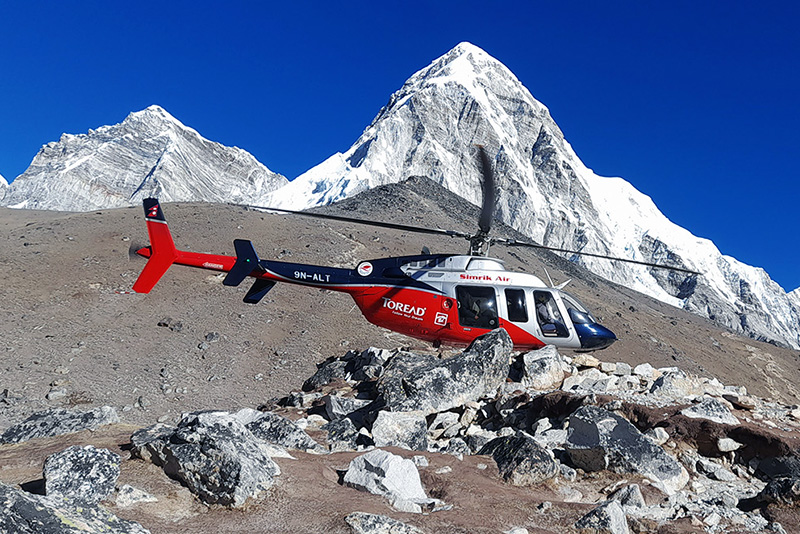
Everest Base Camp Helicopter Tour

Monastery Stay Tour
